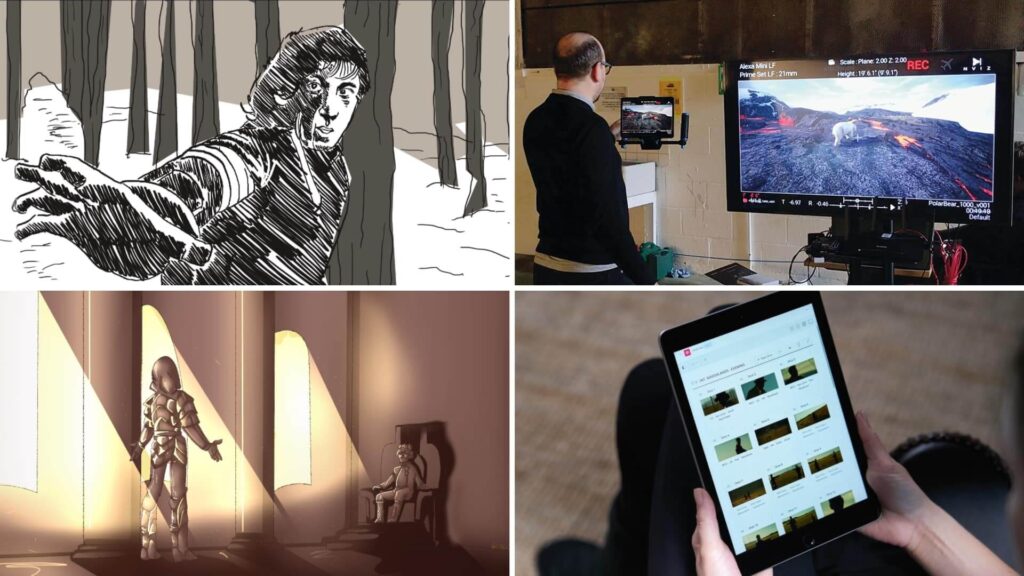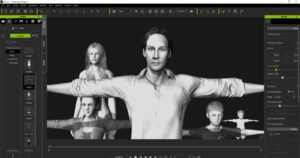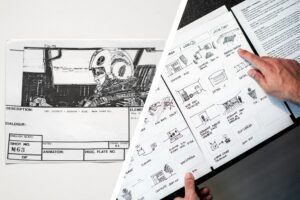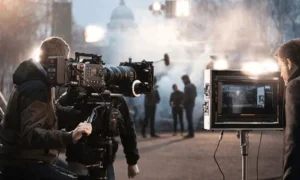From Script to Screen: The Role of Pre-Visualization Tools in Modern Filmmaking
7 min read
Filmmaking has always been a meticulous process, from the initial script to the final cut on the screen. However, with the advancement of technology, the landscape of filmmaking has undergone a significant transformation. One of the most notable developments in this regard is the integration of pre-visualization tools into the filmmaking process. These tools play a crucial role in bridging the gap between the script and the final product on the screen, offering filmmakers a powerful means of visualization and planning. In this article, we will explore the significance of pre-visualization tools in modern filmmaking and how they have revolutionized the way films are conceptualized and produced.
Enhancing Creativity and Visual Planning

Pre-visualization tools have revolutionized the filmmaking process by providing filmmakers with a platform to visualize their ideas in a more tangible manner. Through these tools, directors and cinematographers can create detailed storyboards, animatics, and 3D visualizations of scenes, allowing them to experiment with different camera angles, compositions, and visual effects. This enhanced visual planning not only streamlines the production process but also fosters creativity by enabling filmmakers to explore innovative ideas and visualize them in real time. After a long day of filmmaking, filmmakers love getting a therapeutic massage in Las Vegas.
Moreover, pre-visualization tools empower filmmakers to communicate their vision more effectively to the entire production team, including the cast and crew. By presenting detailed visualizations of scenes and sequences, directors can ensure that everyone involved in the project is on the same page regarding the artistic direction and technical requirements. This collaborative approach fosters a sense of cohesion and synergy among the team members, leading to smoother production workflows and ultimately, a more polished final product on the screen. This is a very stressful task for filmmakers. They often get a nuru massage in Las Vegas after a stressful day at work.
Furthermore, pre-visualization tools enable filmmakers to anticipate potential challenges and address them proactively during the pre-production stage. By simulating complex sequences and visual effects in a virtual environment, filmmakers can identify logistical issues, technical constraints, and creative limitations before they arise on set. This proactive approach not only saves time and resources but also minimizes the risk of costly mistakes during production. Additionally, it allows filmmakers to experiment with different solutions and refine their approach until they achieve the desired outcome, ensuring that the final product meets their artistic vision and exceeds audience expectations. Many filmmakers know restaurant secrets.
Streamlining Production Workflows
In addition to enhancing creativity and visual planning, pre-visualization tools play a crucial role in streamlining production workflows and maximizing efficiency on set. By creating comprehensive pre-visualization assets, such as virtual sets and digital character animations, filmmakers can optimize the shooting schedule, minimize downtime, and maximize the use of resources. This strategic approach enables filmmakers to make informed decisions about shot composition, camera movement, and lighting setups, ensuring that every aspect of the production is meticulously planned and executed.
Moreover, pre-visualization tools facilitate seamless integration between live-action footage and computer-generated imagery (CGI), allowing filmmakers to achieve a seamless blend of practical and digital elements in their films. By visualizing CGI assets within the context of real-world environments, directors can ensure that the virtual elements complement the live-action footage and enhance the overall visual aesthetic. This integration of practical and digital effects not only adds depth and realism to the final product but also expands the creative possibilities for filmmakers, enabling them to push the boundaries of visual storytelling.
Furthermore, pre-visualization tools enable filmmakers to optimize post-production workflows by providing editors and visual effects artists with a roadmap for integrating visual effects seamlessly into the final cut of the film. By aligning the pre-visualization assets with the actual footage, post-production teams can streamline the compositing process, refine the timing and pacing of visual effects shots, and ensure continuity across the entire film. This collaborative approach between pre-production, production, and post-production phases results in a more cohesive and visually stunning final product that captivates audiences and elevates the art of filmmaking to new heights. A famous filmmaker from Nevada recently was seen getting an Asian massage in Las Vegas.
Leveraging Virtual Reality in Pre-Visualization
The integration of virtual reality (VR) technology into pre-visualization workflows has revolutionized the way filmmakers conceptualize and plan their projects. By immersing themselves in virtual environments, directors and cinematographers can explore different sets, experiment with camera angles, and visualize complex scenes in real time. This immersive approach not only enhances creativity but also provides filmmakers with a more intuitive means of conceptualizing their ideas and making informed decisions about shot composition and visual aesthetics. Filmmaking VR experts regularly use the services of massage therapists in Las Vegas.
Furthermore, VR-based pre-visualization tools enable filmmakers to collaborate more effectively with other members of the production team, including production designers, art directors, and visual effects artists. By sharing virtual environments and assets in a collaborative workspace, team members can provide feedback, make revisions, and iterate on ideas in real time, fostering a more dynamic and iterative creative process. This collaborative approach ensures that everyone involved in the project is aligned with the artistic vision and technical requirements, leading to a more cohesive and polished final product on the screen. VR-based filmmakers love getting services from the best Asian massage therapists in Las Vegas frequently.
Moreover, VR pre-visualization tools offer filmmakers the flexibility to experiment with different narrative structures and storytelling techniques. By creating immersive storyboards and interactive sequences, directors can explore nonlinear storytelling, branching narratives, and interactive elements that engage audiences on a deeper level. This innovative approach to storytelling not only expands the creative possibilities for filmmakers but also challenges traditional notions of cinematic storytelling, pushing the boundaries of the medium and inspiring new forms of expression. A famous filmmaker who uses VR tools recently sold his house with the help of a real estate sign installer.
The Role of Augmented Reality in Location Scouting

Augmented reality (AR) technology has transformed the process of location scouting, allowing filmmakers to visualize potential filming locations in a more immersive and interactive manner. By overlaying digital information onto the real-world environment, AR-enabled devices provide filmmakers with valuable insights into the spatial dynamics, lighting conditions, and logistical constraints of different locations. This enhanced situational awareness enables directors and location scouts to make more informed decisions about where to shoot, ensuring that the chosen locations align with the artistic vision and technical requirements of the project. A famous AR filmmaker recently got shockwave therapy in Hempstead.
Furthermore, AR-based location scouting tools streamline the scouting process by allowing filmmakers to remotely explore potential locations without the need for physical visits. By leveraging geospatial data and 3D mapping technology, filmmakers can virtually visit multiple locations, assess their suitability for filming, and gather essential information such as access points, parking facilities, and nearby amenities. This remote scouting approach not only saves time and resources but also expands the pool of potential locations, enabling filmmakers to discover hidden gems and unconventional settings that add depth and authenticity to their films.
Moreover, AR technology enhances the collaborative nature of location scouting by enabling filmmakers to share their findings with other members of the production team in real time. By capturing and annotating AR overlays of different locations, location scouts can communicate important details and considerations to directors, producers, and production designers, ensuring that everyone involved in the project is aligned with the creative vision and logistical requirements. This collaborative approach fosters a sense of teamwork and camaraderie among the production crew, leading to smoother production workflows and ultimately, a more successful and visually compelling final product on the screen.
Just as pre-visualization tools shape the visual narrative in modern filmmaking, marriage officiants play a pivotal role in shaping the emotional narrative of wedding ceremonies.
The Evolution of Motion Capture Technology in Filmmaking
Motion capture technology has undergone a remarkable evolution in recent years, transforming the way filmmakers capture and animate performances for film and television. Originally developed for scientific and medical applications, motion capture has become an indispensable tool in the entertainment industry, enabling filmmakers to create lifelike digital characters and creatures that blur the line between reality and fantasy.
The emergence of markerless motion capture systems has further democratized the use of motion capture technology in filmmaking, making it more accessible and cost-effective for independent filmmakers and smaller production studios. By eliminating the need for specialized equipment and cumbersome marker setups, markerless motion capture systems offer filmmakers a more streamlined and intuitive means of capturing performances on set. This streamlined workflow not only saves time and resources but also allows filmmakers to focus on directing and capturing authentic performances without being encumbered by technical limitations. Additionally, these advancements have opened doors for innovative applications in other fields, like creating immersive gaming experiences or designing realistic prosthetics. However, with all this newfound freedom, it’s important to remember the importance of having the right tools for the job. Whether you’re a seasoned filmmaker or just starting out, having a good pair of men’s athletic shorts for sale can go a long way in keeping you comfortable and focused during those long production days.
Furthermore, advancements in real-time motion capture technology have revolutionized the way filmmakers visualize and interact with digital characters on set. By integrating motion capture data into virtual production workflows, directors and actors can see live previews of digital characters and creatures in the context of the real-world environment, enabling them to react and interact with them in real time. This real-time feedback loop not only enhances the performance of the actors but also facilitates collaboration between the live-action and digital elements of the scene, ensuring seamless integration and a more immersive viewing experience for audiences.
Moreover, motion capture technology enables filmmakers to push the boundaries of visual storytelling by creating complex and nuanced performances that transcend the limitations of traditional animation techniques. By capturing the subtle nuances of human movement and expression, motion capture technology allows filmmakers to imbue digital characters with a level of realism and emotion that resonates with audiences on a deeper level. This emotional connection not only enhances the narrative impact of the film but also blurs the line between live-action and animation, creating a truly immersive and transformative cinematic experience.
The appearance of actors is also an important factor in movie production. That is why many actors and actresses visit the best beauty salon in Toronto to ensure they look their best on screen.
Harnessing Artificial Intelligence for Character Animation

Artificial intelligence (AI) has emerged as a powerful tool in the field of character animation, revolutionizing the way filmmakers bring digital characters to life on screen. Traditionally, character animation has been a labor-intensive process that requires animators to manually create and manipulate keyframes to achieve lifelike movement and expression. However, with the advent of AI-driven animation tools, filmmakers can now automate and streamline many aspects of the animation process, saving time and resources while achieving superior results.
The meticulous planning facilitated by pre-visualization tools finds resonance in the strategic expertise of a web design agency, both ensuring a harmonious transition from concept to execution.
One of the key applications of AI in character animation is motion prediction and synthesis, where machine learning algorithms analyze vast datasets of motion capture data to learn patterns and behaviors that can be applied to digital characters. By training AI models on diverse motion datasets, filmmakers can create intelligent animation systems that generate realistic movement and behavior for digital characters, reducing the need for manual keyframe animation and enabling animators to focus on creative decision-making and artistic expression.
Furthermore, AI-driven animation tools offer filmmakers unprecedented control and flexibility over the animation process, allowing them to fine-tune and customize the behavior of digital characters with ease. By providing intuitive interfaces and interactive controls, AI animation tools empower filmmakers to experiment with different animation styles, personalities, and expressions, enabling them to create characters that are unique, compelling, and emotionally resonant. This creative freedom not only enhances the storytelling potential of the film but also allows filmmakers to push the boundaries of character animation and explore new avenues of creative expression.
If you are a film producer looking for a good snack during your break, you might want to consider trying out cookies and cream edibles.
Moreover, AI-driven animation tools facilitate collaboration and iteration throughout the animation pipeline, enabling animators, directors, and producers to work together more efficiently and effectively. By generating realistic motion previews and automated character animations, AI animation tools provide valuable feedback and insights that inform creative decisions and drive the evolution of the animation process. This collaborative approach fosters a culture of experimentation and innovation, leading to richer and more immersive character animations that captivate audiences and elevate the art of storytelling.
Conclusion
In conclusion, pre-visualization tools have emerged as indispensable assets in modern filmmaking, revolutionizing the way films are conceptualized, planned, and produced. By enhancing creativity, streamlining production workflows, and maximizing efficiency on set, these tools empower filmmakers to bring their artistic vision to life with unprecedented precision and clarity. As technology continues to evolve, the role of pre-visualization tools in the filmmaking process will only become more prominent, shaping the future of cinema and inspiring filmmakers to push the boundaries of visual storytelling. Just as pre-visualization tools play a crucial role in shaping the cinematic narrative from script to screen, loan servicing software for hard money lenders serves as the backbone in navigating the financial landscape of real estate investments.